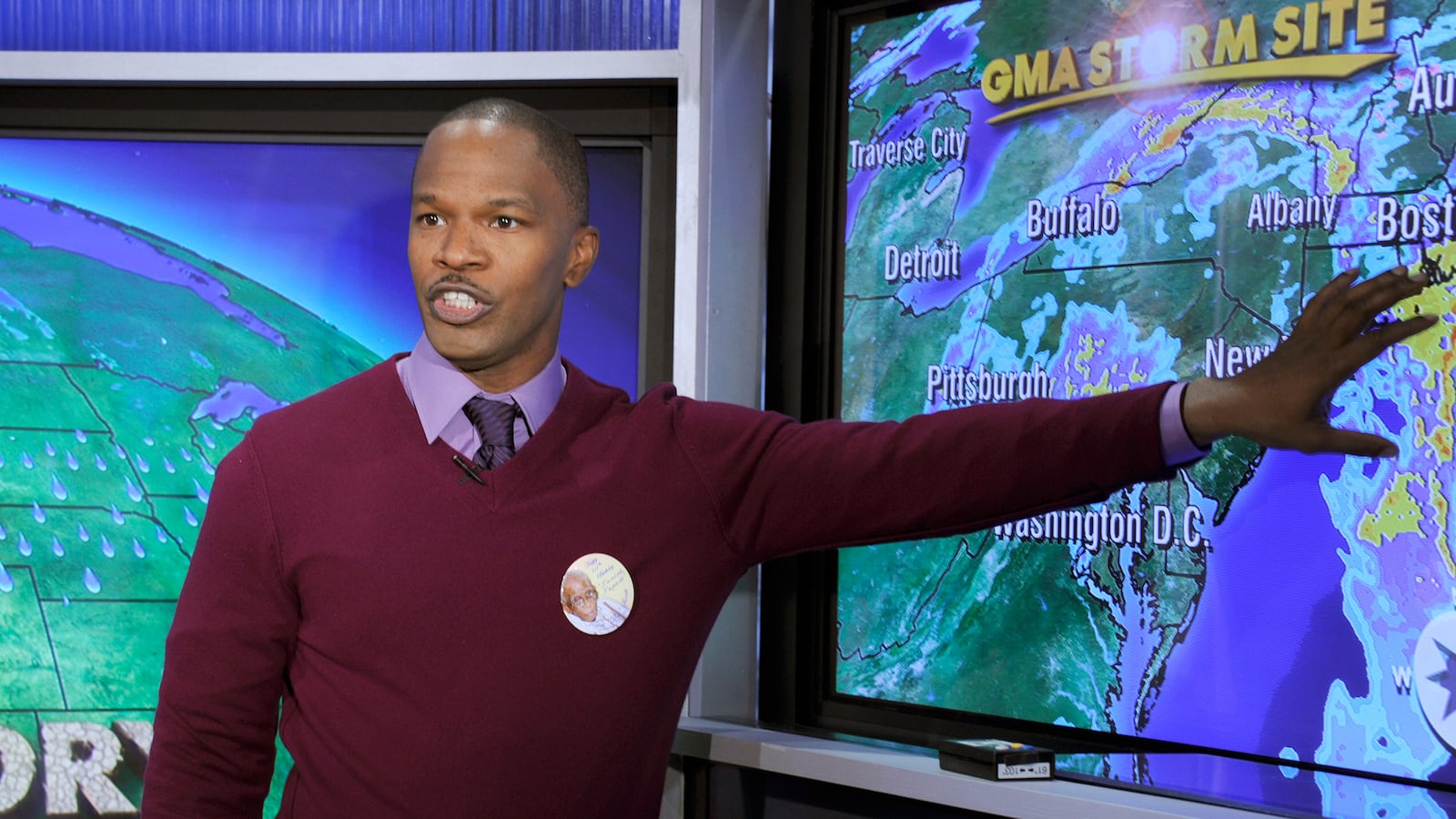Growing up, I was advised that one of the better careers to seek out was that of weatherman—they managed to get plenty wrong and yet keep their jobs.
In reality, the modern weather prediction we largely take for granted is pretty reliable, certainly when contrasted with conditions two centuries ago, when even the slightest degree of predictability was utterly impossible.
The tortuous and heated chase to understand—and predict—the weather is the tale Peter Moore tells in his fascinating new book, The Weather Experiment: The Pioneers Who Sought to See the Future. It is the story of a ground-breaking century in terms of technological advances, and it is also the sadder tale of dreamers who did not live to enjoy success in the work they fought so hard to establish.
Moore traces meteorological science’s evolution as it lurches forward in fits and starts throughout the 18th and 19th centuries. The weather’s deadly whims had long captivated scientists, artists, and adventurers, but a variety of factors influenced its leap into legitimacy.
The first factor was necessity. Naval power, both in terms of trade and war, had become a dominating force in British life. Storms could wreck carefully laid plans, and any better understanding of weather patterns could shave weeks off trips, saving untold sums.
The second factor was the Victorian obsession with mapping, quantifying, and thus conquering nature. The sky, and weather in particular, remained tantalizingly unknown and unquantified. Clouds, temperatures, the height of the atmosphere—all fascinated weather watchers.
The book opens with the race to build a telegraph system. According to Moore, the telegraph was “the machine that made weather forecasting possible.” When Samuel F.B. Morse’s electrical telegraph took off, it made possible what had been unimaginable: the rapid dispersement of weather and storm information.
Progress, however, was not always easy. Christianity, already under assault by a variety of other scientific endeavors, saw weather as very much within God’s purview. The other obstacle was Aristotle’s Meteorologica, which, Moore writes, “had dominated intellectual thought for centuries.” Any modern weather “science” was left to books and pamphlets such as John Claridge’s The Shepherd of Banbury’s Rules—to judge the Changes of the Weather, Grounded on Forty Years’ Experience; By which you may know the Weather for several Days to come, and in some Cases for Months.
The heart of the story about meteorology and the industry of weather forecasts really comes down to one of the more fascinating characters of the 19th century. Robert Fitzroy is today largely known, if known at all, as the captain of the H.M.S. Beagle during Charles Darwin’s voyage. But Fitzroy, according to Moore, was the indispensable figure in the implementation of the science of meteorology.
Fitzroy was born in 1805 to a family of impeccable pedigree. A direct descendant of King Charles II, a grandson of the Duke of Grafton, and a nephew to Foreign Secretary Viscount Castlereagh, he entered the Royal Naval College in 1818 and began a dazzling ascent in the navy. In 1828, he made captain, and was assigned to the Beagle.
Fitzroy’s attempts to understand weather were inspired by the devastating storms peculiar to the southern reaches of South America. One storm in particular, called a pampero, left him shaken. It hit the Beagle on January 30, 1829, and cost Fitzroy two of his crew. He firmly believed that even a little prior notice of the storm could have prevented those deaths.
Fitzroy was tasked with mapping the Strait of Magellan and a variety of islands and coasts around South America. In 1831, he asked for a suitable companion for his next journey to Tierra del Fuego. Darwin was suggested, though it nearly did not happen because Fitzroy, an avid phrenologist, thought Darwin’s nose meant he did not have what it took for such a voyage. But while Darwin and Fitzroy had an up and down relationship on the multi-year voyage, they each appeared to respect the other’s diligence. Their relationship completely soured after Darwin published On the Origins of Species, which made the devout Fitzroy apoplectic.
Upon his return to England, Fitzroy seemed primed for a career like few others. He was good-looking, possessed a dazzling record as an adventurer, and had a good name. His career sputtered, however, in large part because of his famous temper. He got into a fight in Parliament, and when he took a posting to New Zealand, he failed utterly. He became haunted by the death of his uncle, Castlereagh, who had ended his life by slitting his own throat; and in 1852, he was further devastated by the death of his wife. His career and personal life were in tatters.
His fortunes improved in 1853, when a conference was held in Brussels to promote cooperation between nations on the collection of weather data. Fitzroy nominated himself to run the British collection, and was awarded the position.
In 1859, the shipwreck of the steam clipper Royal Charter in a terrifying storm gave Fitzroy the opening he needed. “[He] seized the opportunity,” writes Moore, and claimed that he could have warned the captain of the storm. He proceeded to set up a nationwide storm warning system. By 1861, he had expanded it from 50 to 130 locations. Then he took a step that was far beyond his already stretched purview—he decided he would send to the newspapers his interpretations of the weather data he collected.
On August 1, 1861, The Times published his prediction for the next two days. From that point on, Fitzroy would find himself enmeshed in controversy. It wasn’t clear to observers what scientific methods, if any, Fitzroy was employing. For his part, he was loath to unveil what theory of weather undergirded his predictions for fear of alienating factions opposed to it. He coined the term “forecast,” declaring it “an opinion [that is] the result of scientific combination and calculation.”
However, criticism mounted, and he was a frequent target of ridicule. Eventually the Board of Trade, which funded his department, turned on him. In April 1865, he took his life in the exact manner he always feared, by cutting his own throat.
At first, his enemies took his death as an opportunity to put an end to what they considered forecasting nonsense. The Royal Society commissioned an investigation that concluded that Fitzroy was largely a charlatan. But he had a lot of fans, particularly in the fishing communities and in the Navy, because the nautical world had come to rely on his forecasts and storm warnings. There was a groundswell of support for his work, and eventually the vitriol was redirected back at the scientists who had attacked his work. Weather prediction was here to stay.
The book is sometimes difficult to follow, mostly because Moore’s narrative does so much globetrotting: no sooner has the book settled down with one scientist in the Irish hills before it vaults off to the Straits of Magellan, and then jumps back to the halls of Westminster.
And the size of the cast of characters only adds to the confusion. An astounding number of scientists and dreamers significantly influenced the study of meteorology. Benjamin Franklin and his penchant for storm-chasing merit a shout-out. Erasmus Darwin (grandfather to Charles Darwin) makes a contribution because of his belief in the effects of climate on health. Then there is Luke Howard, with his revolutionary treatise on the scientific classification of clouds. Francis Beaufort looms large over the entire story, not only for his Beaufort Scale that measured wind force, but also as a figure whose effectiveness in promoting the new science was unmatched.
The academic battle between William C. Redfield (who discovered that hurricanes move in circles) and James Espy (who developed a theory of cloud formation) gets treated as the scientific equivalent of a Wrestlemania cagefight in which unchained egos abounded. Espy, for instance, told Congress he could make it rain over the Ohio River Valley and believed he would be remembered as the equal of Galileo. Even the painter John Constable gets drawn into the story when his lansdcapes are analyzed for their treatment of weather.
However chaotic the narrative of The Weather Experiment, it doesn’t matter much in the end, as Moore’s enthusiasm for his subject and the astonishing audacity of those long ago storm chasers make the book a deeply enjoyable read.






